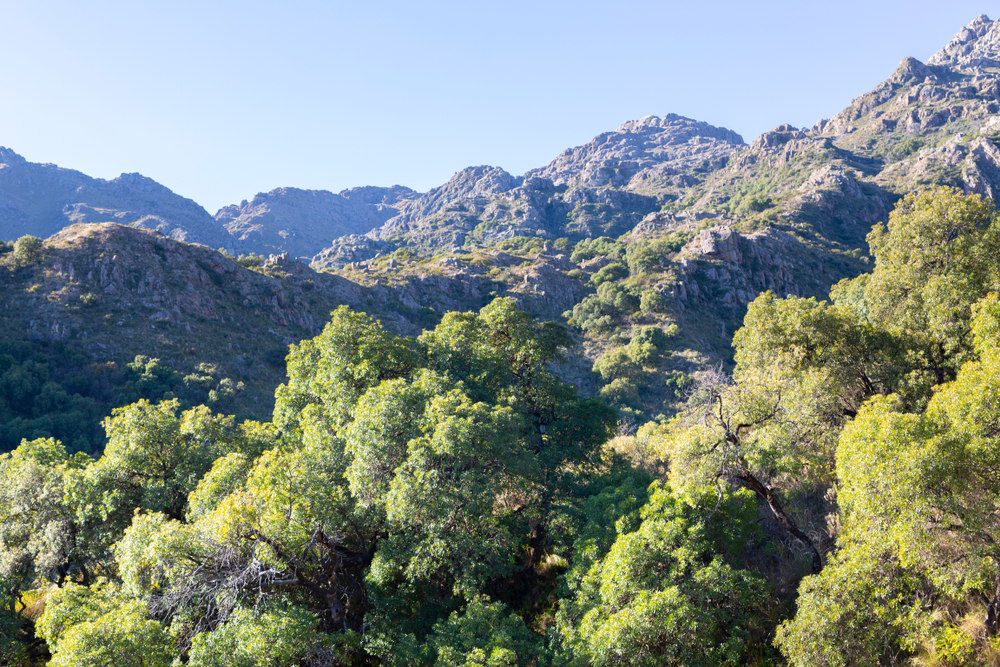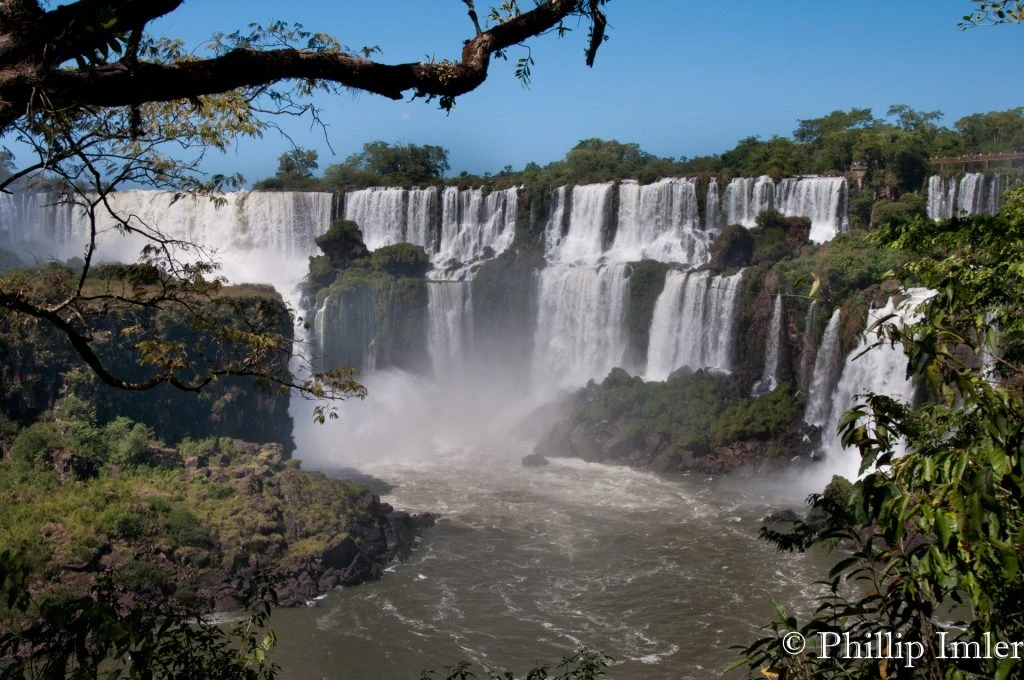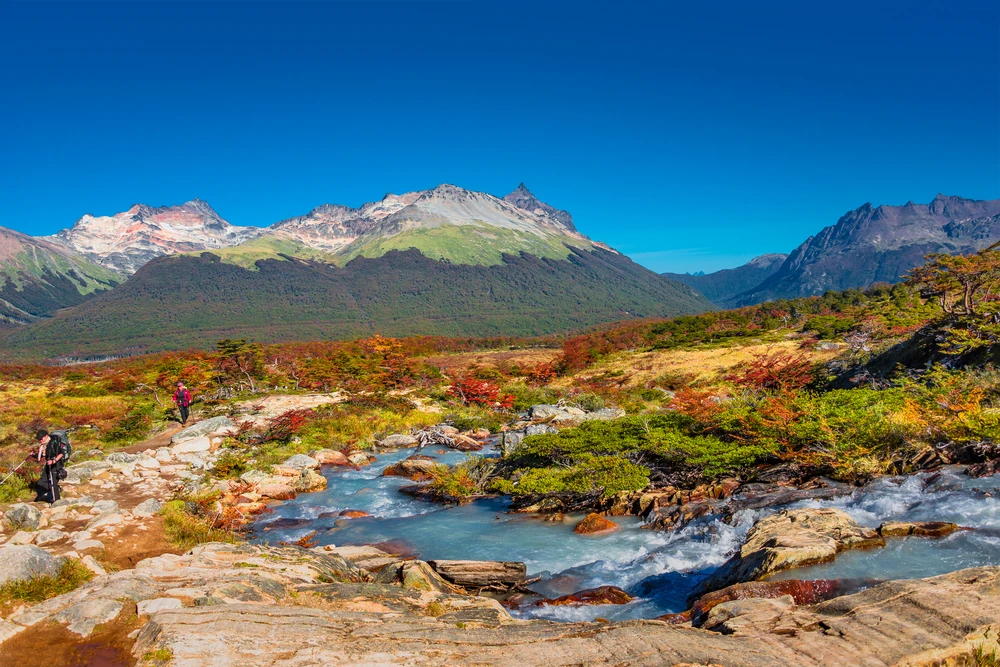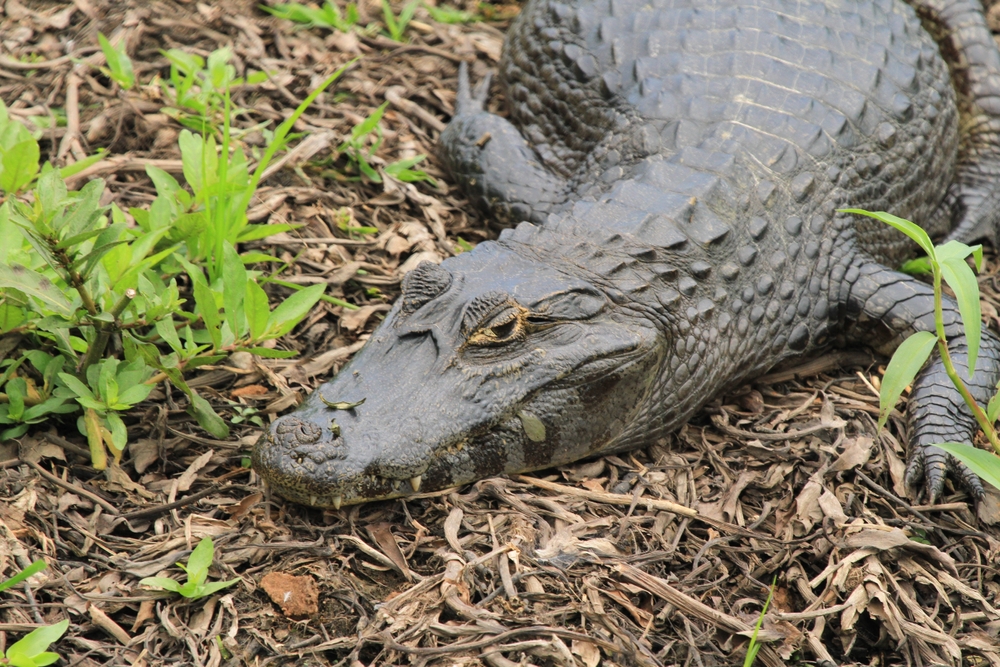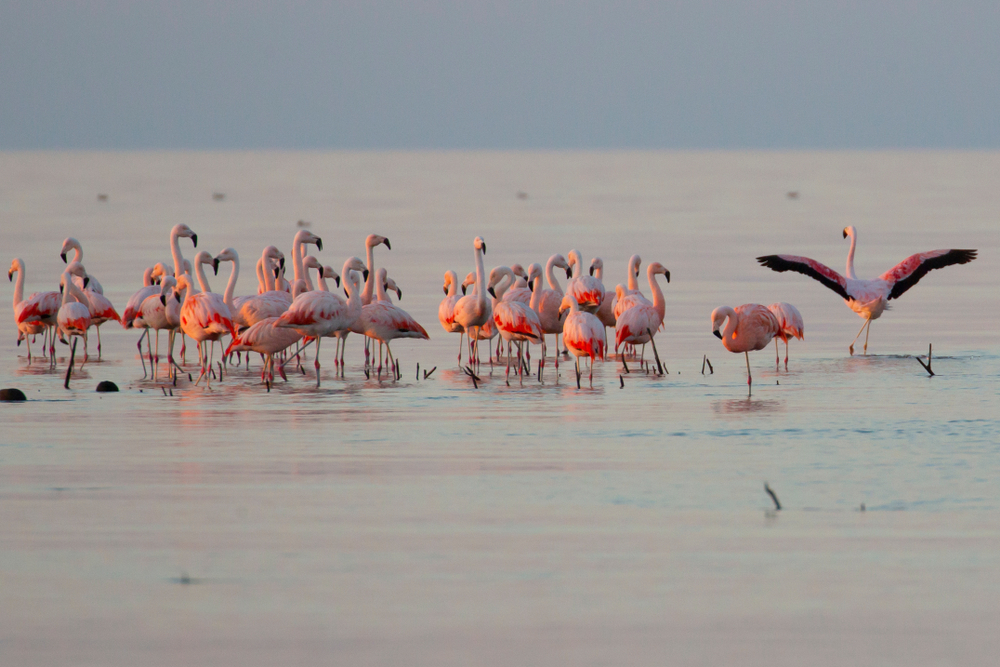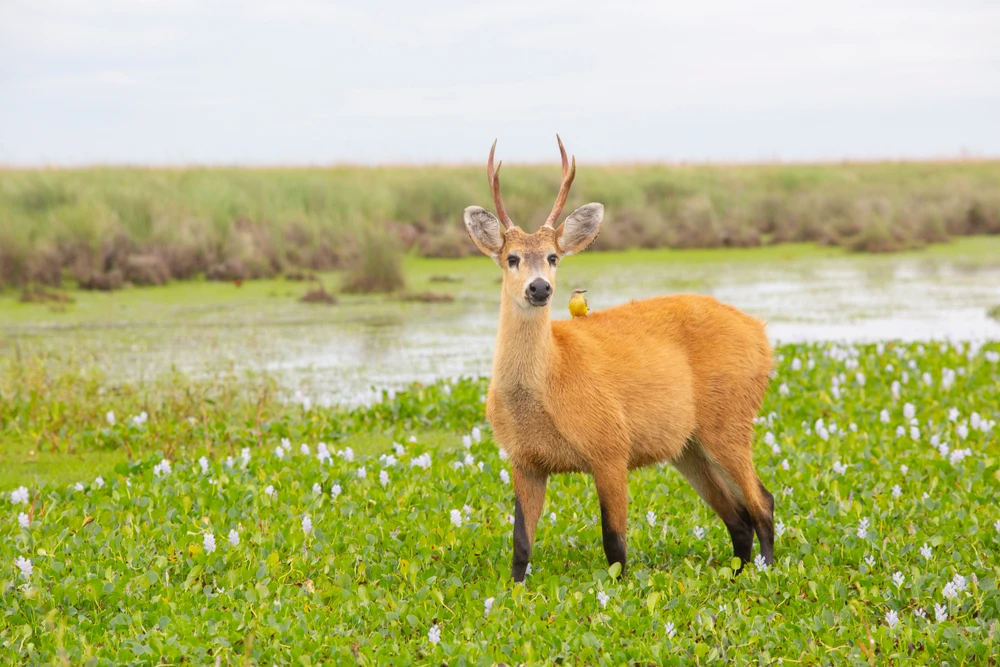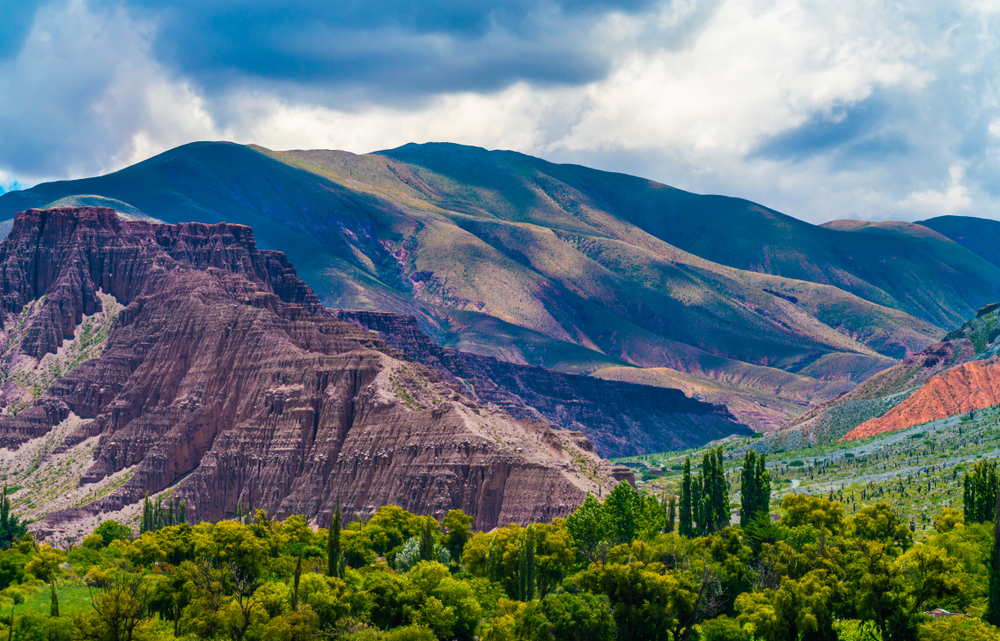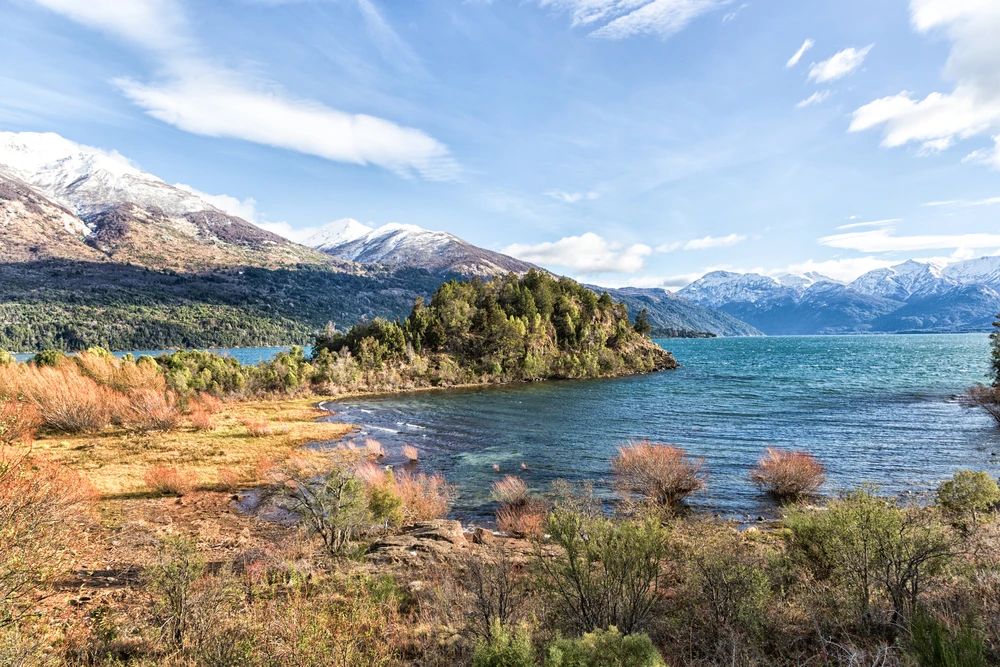Traslasierra Overview
Traslasierra National Park, known locally as Parque Nacional Traslasierra, is a protected area located in the northwest of Córdoba Province, Argentina.
Established in 2018, the park encompasses approximately 440 square kilometers (170 square miles) of the Dry Chaco ecosystem, one of the most threatened ecoregions globally. The park is situated within the historical Estancia Pinas, a rural estate that preserves remnants of the Comechingón culture and a 19th-century chapel.
The terrain of Traslasierra National Park is characterized by its mountainous landscapes, including the western slopes of the Sierras de Pocho. This area showcases the Chaco Serrano forest, a unique environment within the Dry Chaco region.
The landscape features rolling hills, dense woodlands, and arid valleys, creating a diverse mosaic of habitats. The park’s vegetation includes native species such as quebracho blanco, algarrobo, horco quebracho, mistol, and brea, which are well-adapted to the semi-arid conditions of the region.
Wildlife in Traslasierra National Park is diverse, with approximately 230 bird species, 35 mammal species, and 30 reptile species identified within its boundaries. Notable mammals include the puma, guanaco, collared peccary, and the Chacoan peccary—a species once thought extinct in the province of Córdoba.
The park also provides habitat for the Argentine tortoise and the lesser anteater. Bird enthusiasts can observe species such as the crowned solitary eagle, Andean condor, yellow cardinal, turquoise-fronted amazon, and Chaco owl, some of which are considered threatened or endangered.
Visitors to Traslasierra National Park can explore the remnants of the Estancia Pinas, including its well-preserved colonial-era buildings and chapel. The park’s diverse landscapes offer opportunities for hiking, birdwatching, and wildlife observation. While the park is still in the process of developing its infrastructure, future plans aim to enhance accessibility and visitor facilities to promote ecotourism and environmental education.
The establishment of Traslasierra National Park represents a significant conservation success, protecting a substantial portion of the Dry Chaco ecosystem. This achievement results from collaborative efforts among national and provincial governments, non-governmental organizations, and international foundations.
Notably, the Wyss Foundation contributed $4 million to support the park’s creation, ensuring the preservation of this critical habitat. Ongoing conservation challenges include managing land use changes, preventing deforestation, and mitigating the impacts of agricultural expansion to maintain the ecological integrity of the park.








































































